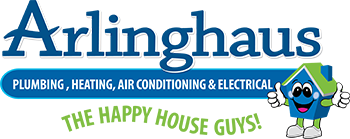No matter where you go, you’ll hear homeowners raving about their high-efficiency gas furnaces. If you’re thinking about replacing your current heating system with a high-efficiency condensing furnace, you’ll also need high-efficiency furnace venting.
High-efficiency furnace venting has a different system than traditional, medium-efficiency furnace venting. However, several benefits to this relatively new type of venting are worth discussing. But what is high-efficiency furnace venting? Below, we’ll go over what you need to know about high-efficiency furnace venting.
Traditional vs. High-Efficiency Venting
When discussing what you need to know about high-efficiency furnace venting, it’s vital to cover how it differs from traditional gas furnace venting.
Traditional Furnace Venting
These furnaces usually use metal venting. Traditional, medium-efficiency furnaces dispose of gases created during the combustion process by expelling them through vertical exhaust vents that connect to the furnace.
High-Efficiency Furnace Venting
But what is high-efficiency furnace venting, and why is it needed? A high-efficiency furnace needs a different type of venting system because it retains the heat from the exhaust gases. After the heat has been extracted, a mixture of carbon dioxide and acidic water is left behind.
As a result, high-efficiency furnaces need a special type of venting to remove this mixture since the acidic water would damage average vents. High-efficiency furnaces need PVC pipes, which are used to remove the acidic condensation and for air intake.
Additionally, sidewall venting is needed with high-efficiency furnaces to prevent carbon dioxide from leaking into your home. Sidewall venting requires individual vent pipes that are installed horizontally. This can be achieved with both single-pipe system and two-pipe system installations.
The Benefits of High-Efficiency Furnace Venting
While you now know what high-efficiency furnace venting is, you may still be wondering if a high-efficiency furnace is a suitable choice for your home. Here are some benefits that will further tell you what you need to know about high-efficiency furnace venting.
Improved Heating
With a standard furnace, the vertical venting method cannot separate the residual heat created by the combustion gases from the combustion gases themselves. As a result, precious heat is lost. If your current system struggles with efficient heating, consider a professional furnace repair to improve performance before opting for a replacement.
High Efficiency Ratings
As you can guess by the name, high-efficiency furnaces have higher energy efficiency ratings. These furnaces can achieve Annualized Fuel Utilization Efficiency (AFUE) ratings of 90 or higher. The higher the AFUE rating, the more efficient the system.
Also, since high-efficiency furnaces don’t have to work as hard to heat your home, they won’t waste as much energy as medium-efficiency models. As a result, you may notice savings on your energy bills.
Electronic Ignition
High-efficiency furnaces also have a hot surface ignition system that creates combustion with an electronic ignition system. Since these furnaces don’t use a pilot light, they tend to be safer than conventional furnace models.
Special Drainage
Furnaces with high efficiency also have special drainage requirements. High-efficiency furnaces possess a unique heat exchanger technology that allows them to remove heat from the combustion gases to the point where the gases condense and create condensation. The condensation is removed through a floor drain.
You can also learn more about how long furnaces last to better understand when it might be time for an upgrade.
Is High-Efficiency Venting For You?
There you have it! We’ve finished discussing what you need to know about high-efficiency furnace venting. If you still have questions about what high-efficiency venting is and how it can benefit your home, our HVAC professionals in Cincinnati, OH are happy to help.
Arlinghaus is always happy to assist you with top-quality heating and air services in Boone. Our Happy House Experts are all about going the extra mile to ensure that our customers are comfortable and satisfied.
Get in touch with one of our HVAC contractors in Boone County today to learn more about high-efficiency furnace venting systems!


